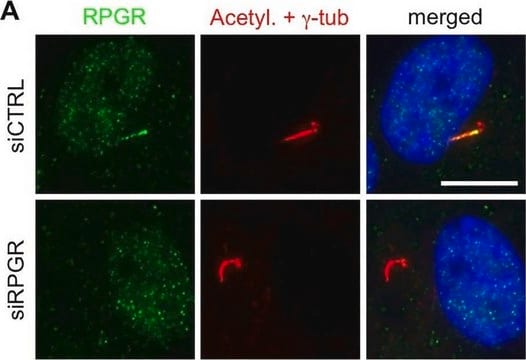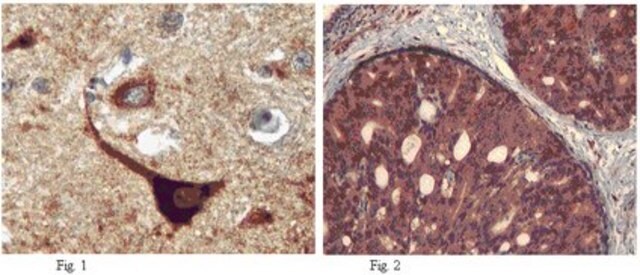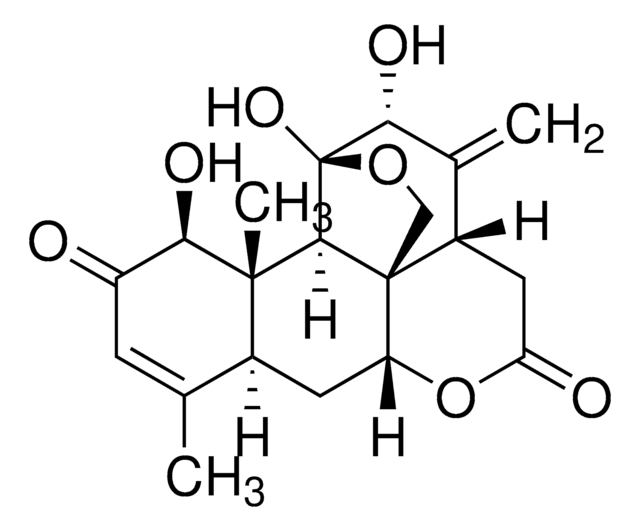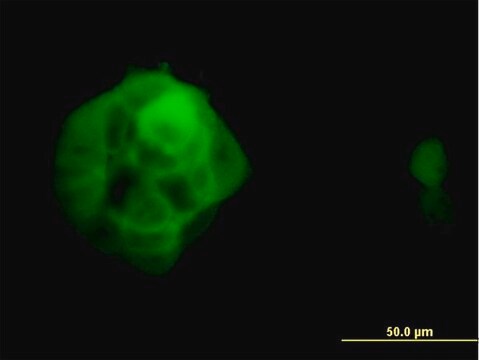ABN1686
Anti-Rootletin
from chicken, purified by affinity chromatography
Synonim(y):
Ciliary rootlet coiled-coil protein
About This Item
Polecane produkty
pochodzenie biologiczne
chicken
Poziom jakości
forma przeciwciała
affinity isolated antibody
rodzaj przeciwciała
primary antibodies
klon
polyclonal
oczyszczone przez
affinity chromatography
reaktywność gatunkowa
human, porcine, mouse
metody
western blot: suitable
izotyp
IgY
numer dostępu NCBI
numer dostępu UniProt
Warunki transportu
ambient
docelowa modyfikacja potranslacyjna
unmodified
informacje o genach
mouse ... Crocc(230872)
Opis ogólny
Specyficzność
Immunogen
Zastosowanie
Neuroscience
Immunohistochemistry Analysis: A representative lot detected Rootletin in Immunohistochemistry applications (Yang, J., et. al. (2002). J Cell Biol. 159(3):431-40; Sun, X., etl al. (2016). Proc Natl Acad Sci USA. 113(21):E2925-34; Yadav, S.P., et. al. (2016). Development. 143(9):1491-501; Pawlyk, B.S., et. al. (2016). Gene Ther. 23(2):196-204; Sun X., et. al. (2012). Cilia. 1(1):21; Liu, X., et. al. (2007). Proc Antl Acad Sci USA. 104(11):4413-8; Bahe, S., et. al. (2005). J Cell Biol. 171(1):27-33; Yang, J., et. al. (2005). Mol Cell Biol. 25(10):4129-37; Hong, D.H, et. al. (2003). Invest Ophthalmol Vis Sci. 44(6):2413-21).
Jakość
Western Blotting Analysis: A 1,000 dilution of this antibody detected Rootletin in 10 µg of mouse retina tissue lysate.
Opis wartości docelowych
Postać fizyczna
Przechowywanie i stabilność
Handling Recommendations: Upon receipt and prior to removing the cap, centrifuge the vial and gently mix the solution. Aliquot into microcentrifuge tubes and store at -20°C. Avoid repeated freeze/thaw cycles, which may damage IgG and affect product performance.
Inne uwagi
Oświadczenie o zrzeczeniu się odpowiedzialności
Not finding the right product?
Try our Narzędzie selektora produktów.
Kod klasy składowania
10 - Combustible liquids
Klasa zagrożenia wodnego (WGK)
WGK 2
Certyfikaty analizy (CoA)
Poszukaj Certyfikaty analizy (CoA), wpisując numer partii/serii produktów. Numery serii i partii można znaleźć na etykiecie produktu po słowach „seria” lub „partia”.
Masz już ten produkt?
Dokumenty związane z niedawno zakupionymi produktami zostały zamieszczone w Bibliotece dokumentów.
Nasz zespół naukowców ma doświadczenie we wszystkich obszarach badań, w tym w naukach przyrodniczych, materiałoznawstwie, syntezie chemicznej, chromatografii, analityce i wielu innych dziedzinach.
Skontaktuj się z zespołem ds. pomocy technicznej
